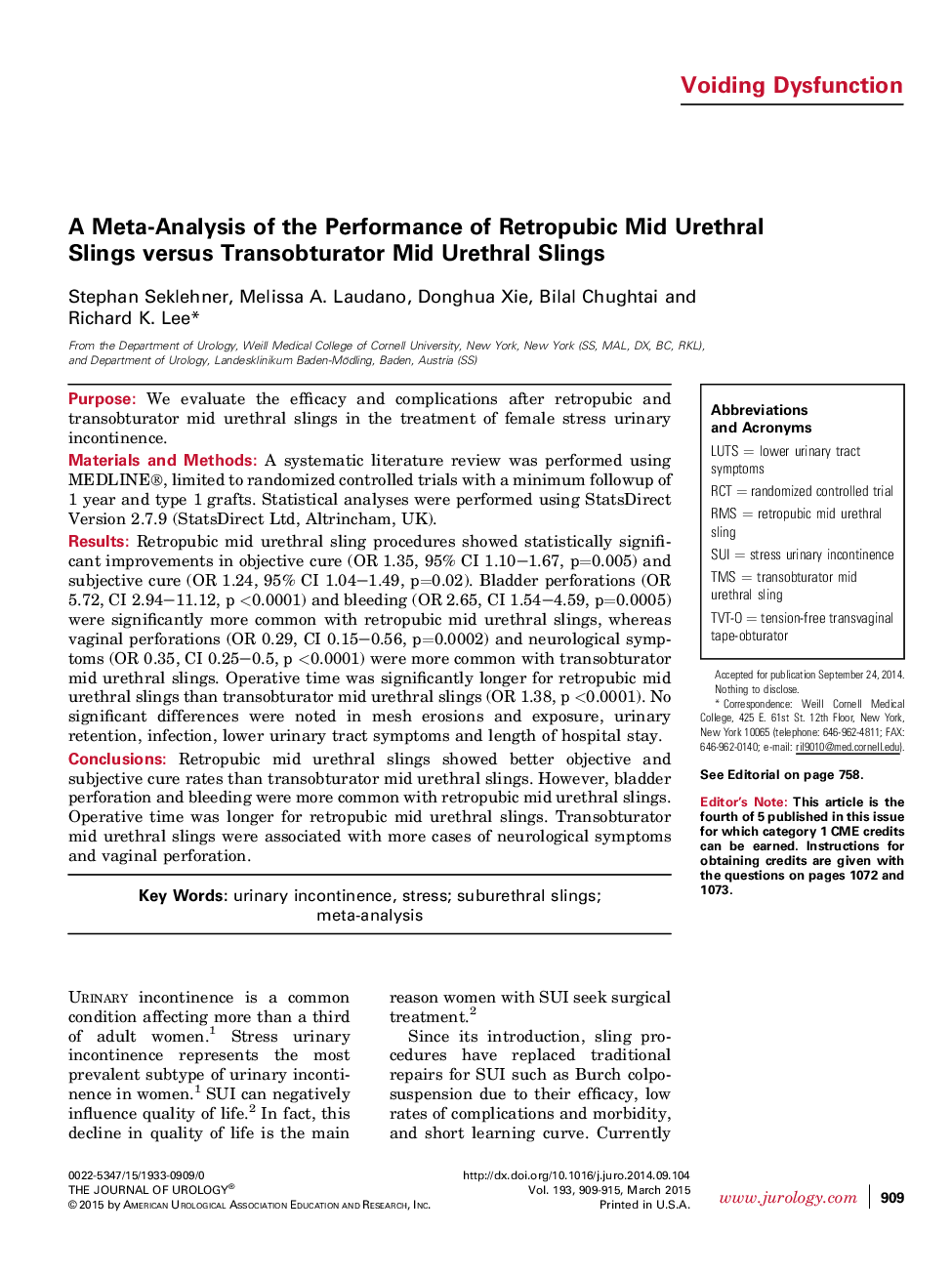| کد مقاله | کد نشریه | سال انتشار | مقاله انگلیسی | نسخه تمام متن |
|---|---|---|---|---|
| 3859460 | 1598894 | 2015 | 7 صفحه PDF | دانلود رایگان |
PurposeWe evaluate the efficacy and complications after retropubic and transobturator mid urethral slings in the treatment of female stress urinary incontinence.Materials and MethodsA systematic literature review was performed using MEDLINE®, limited to randomized controlled trials with a minimum followup of 1 year and type 1 grafts. Statistical analyses were performed using StatsDirect Version 2.7.9 (StatsDirect Ltd, Altrincham, UK).ResultsRetropubic mid urethral sling procedures showed statistically significant improvements in objective cure (OR 1.35, 95% CI 1.10–1.67, p=0.005) and subjective cure (OR 1.24, 95% CI 1.04–1.49, p=0.02). Bladder perforations (OR 5.72, CI 2.94–11.12, p <0.0001) and bleeding (OR 2.65, CI 1.54–4.59, p=0.0005) were significantly more common with retropubic mid urethral slings, whereas vaginal perforations (OR 0.29, CI 0.15–0.56, p=0.0002) and neurological symptoms (OR 0.35, CI 0.25–0.5, p <0.0001) were more common with transobturator mid urethral slings. Operative time was significantly longer for retropubic mid urethral slings than transobturator mid urethral slings (OR 1.38, p <0.0001). No significant differences were noted in mesh erosions and exposure, urinary retention, infection, lower urinary tract symptoms and length of hospital stay.ConclusionsRetropubic mid urethral slings showed better objective and subjective cure rates than transobturator mid urethral slings. However, bladder perforation and bleeding were more common with retropubic mid urethral slings. Operative time was longer for retropubic mid urethral slings. Transobturator mid urethral slings were associated with more cases of neurological symptoms and vaginal perforation.
Journal: The Journal of Urology - Volume 193, Issue 3, March 2015, Pages 909–915
